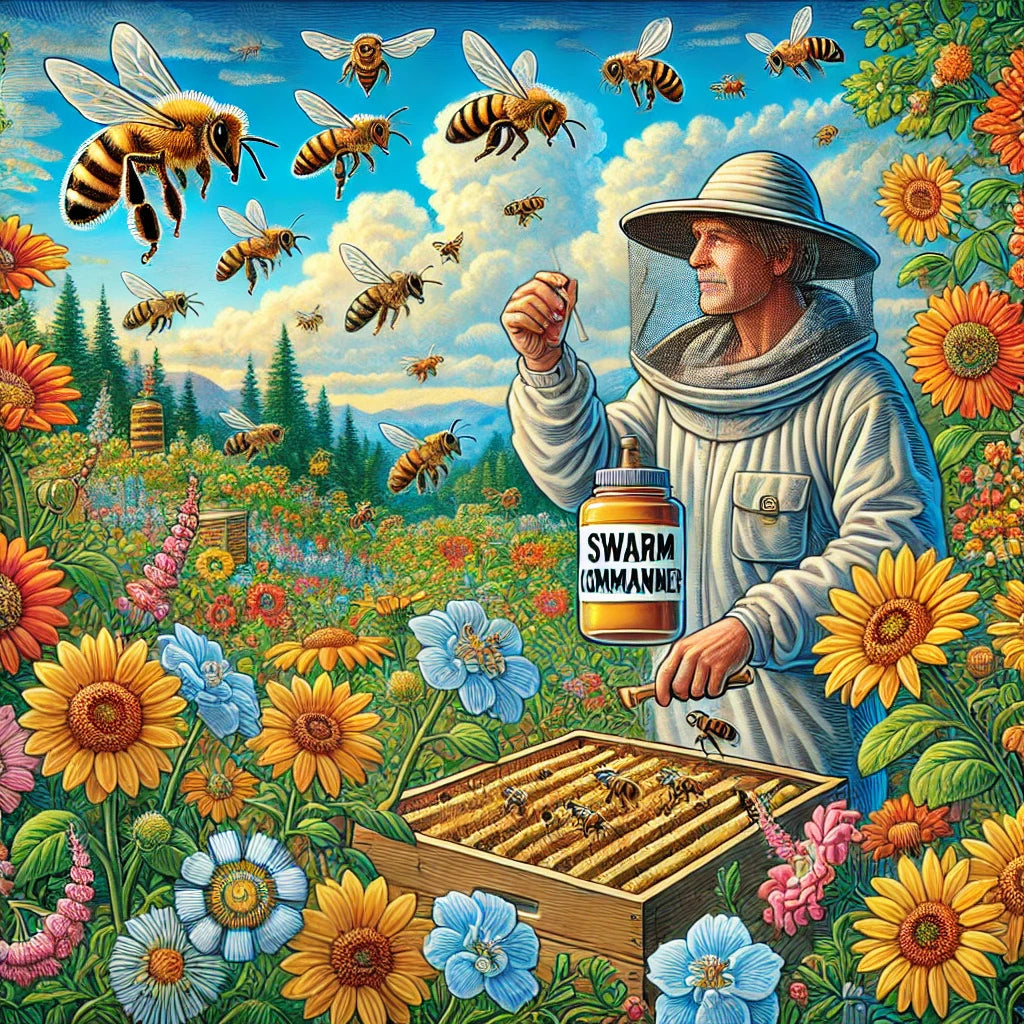When it comes to supporting pollinators, native plants play a crucial role in creating thriving habitats for both honey bees and native bees. However, there’s often confusion about the differences between these pollinators and how they interact with their environments. Understanding the dynamic between honey bees vs. native bees can help you design gardens or landscapes that support both.
With Swarm Commander’s insights and the right plant choices, you can strike a balance that benefits your local ecosystem while boosting pollination.
Why Native Plants Matter
Native plants are essential for maintaining ecological balance. These plants have evolved alongside native pollinators, making them the best food source for local bees. Unlike ornamental or exotic plants, native varieties are easier for bees to access, as they provide the right type of nectar and pollen.
Native plants also improve biodiversity, support wildlife, and require less maintenance, as they’re adapted to the local climate. Whether you’re working with honey bees or native pollinators, incorporating native plants ensures a steady food source and a healthier environment.
Honey Bees vs. Native Bees: Understanding the Differences
While honey bees often get the spotlight for their role in agriculture, native bees are just as important. Understanding their differences helps you cater to both in your garden.
- Honey Bees: Imported from Europe, honey bees are managed by beekeepers and are crucial for crop pollination. They live in colonies with a queen and thousands of workers.
- Native Bees: These include solitary species like mason bees and bumblebees. Native bees are highly efficient pollinators, often outperforming honey bees on specific plants.
- Behavioral Differences: Honey bees forage in large numbers, while native bees tend to work alone or in small groups.
- Pollination Preferences: Native bees often prefer native plants, while honey bees can adapt to a wider range of flora.
By providing diverse plants, you can support both types of pollinators.
Native Plants That Attract Pollinators
To create a bee-friendly environment, focus on planting native varieties that appeal to both honey bees and native bees.
Ideal Native Plants for Pollinators
- Wildflowers: Milkweed, goldenrod, and black-eyed Susan are excellent choices.
- Shrubs and Trees: Serviceberry, elderberry, and redbud provide early-season blooms.
- Herbs: Native varieties of mint, oregano, and thyme attract bees while adding fragrance to your garden.
- Grasses: Switchgrass and little bluestem provide shelter for ground-nesting bees.
By planting these, you ensure year-round food and habitat for all types of pollinators.
How to Create a Balanced Habitat
Supporting both honey bees and native bees requires a thoughtful approach. Follow these tips to create a balanced, thriving habitat:
- Diverse Plant Selection: Include a mix of native flowers, shrubs, and trees that bloom at different times of the year.
- Limit Pesticide Use: Opt for natural pest control methods to protect sensitive pollinators.
- Provide Nesting Sites: Offer bee hotels or leave patches of bare ground for ground-nesting species.
- Add Water Sources: Bees need water to cool their hives and stay hydrated.
- Protect Hives and Nests: Use bee trap attractants to manage pests without disrupting bee activity.
This balance creates an environment where both honey bees and native bees can thrive.
Key Benefits of Native Bees
While honey bees are essential for agriculture, native bees offer unique benefits that shouldn’t be overlooked:
- Efficient Pollination: Many native species pollinate crops more effectively than honey bees.
- Adapted to Local Flora: Native bees are better suited to pollinate local plants, ensuring ecosystem stability.
- Low Maintenance: Unlike managed honey bees, native bees require no human intervention.
- Diverse Species: With over 4,000 species in North America, native bees support a wide range of plants and crops.
By supporting native bees, you contribute to a robust and diverse pollinator population.
Honey Bees vs. Native Bees: Collaborative Pollination
It’s not about choosing honey bees vs. native bees—both play essential roles in pollination. Honey bees are perfect for large-scale agriculture, while native bees excel at pollinating wildflowers and niche crops. Together, they ensure pollination across a wide variety of plants, maintaining biodiversity and food security.
Strengthen Your Habitat with Swarm Commander
Creating a pollinator-friendly environment is one of the best ways to support both honey bees and native bees. By incorporating native plants, reducing pesticide use, and understanding the roles of these incredible pollinators, you can make a lasting impact. With Swarm Commander’s guidance, you’ll have the tools and knowledge to build thriving habitats that benefit bees and the ecosystem.
For expert tips on managing hives and creating pollinator-friendly environments, turn to Swarm Commander. At Swarm Commander, you can find products such as bee trap attractants, beetle traps for beehives and resources on bee hive relocation and how to start a bee farm. Build a balanced space where honey bees and native bees can thrive together.
Frequently Asked Questions About Native Plants & Honey Bees vs. Native Bees
Q1. What are native plants, and why are they important for bees?
Native plants are species that have evolved in a specific region. They provide the most suitable nectar and pollen for local pollinators.
Q2. How can I attract both honey bees and native bees?
Plant diverse native species, avoid pesticides, and provide nesting areas to support both types of pollinators.
Q3. Are native bees better pollinators than honey bees?
Native bees often outperform honey bees on specific plants, especially native flowers. Both are essential for pollination.
Q4. What is the role of Swarm Commander in supporting pollinators?
Swarm Commander provides insights and tools to help manage hives and create pollinator-friendly habitats.
Q5. How do I protect bees from pests without using harmful chemicals?
Use natural methods like bee trap attractants and maintain clean, healthy habitats to reduce pest interference.



